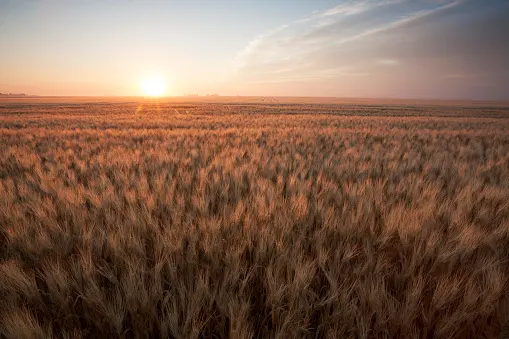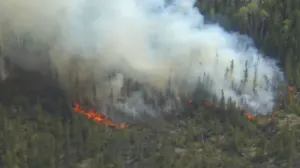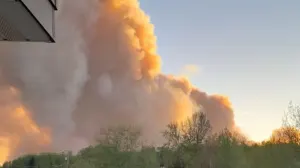
Forest fires and ice intertwine in wild Prairie conditions
Here's how forest fires and ice are able to exist in relatively close proximity
There are currently major fire complexes billowing towards Saskatchewan that are less than 700 km away from frozen lakes. How can frozen lakes exist as we approach the summer months in the Prairie provinces, with major forest fires burning in such close proximity?
Northern Saskatchewan, home of a myriad of glacial lakes, currently contains two ice-locked lakes. To Canadians unfamiliar with these conditions, it seems downright bizarre.
How do we know that these lakes are continuously frozen? Well, we have sophisticated satellite technology at our disposal, and we’re able to gauge with high certainty how much ice coverage exists on these two remote lakes.

Reindeer and Wollaston Lakes, Saskatchewan on June 2019.
Yes, that’s forest fire smoke blowing over the icy landscape of Reindeer Lake.
A first good look is at the surface temperature anomalies over the past month or so, through the heart of spring. It’s no surprise, there’s a sharp cutoff gradient between well above seasonal temperatures and temperatures nearly 4°C below normal touching northern Saskatchewan.
If you’re a chunk of ice in Reindeer Lake, your survival depends on those cool temperature anomalies to preserve your coverage.

This pattern of warm and dry conditions in Alberta spawned aggressive forest fire burning approximately 700,000 hectares of land.
But, some primitive empirical research discovered even more smoke and ice intertwining. Take June 2011 for an example:

Fire complexes were even closer to these frozen features, with substantial ice coverage existing over Reindeer Lake.
Is having ice cover in June a usual or common feature?
Ice cover more often than not spills into early June in these lakes, but 2009 stands out as an extreme outlier:

This year highlighted lake ice persisting after Canada day in Saskatchewan, which can be considered an extreme anomaly during the 21st century. The ice subsequently broke up a few days later, but it emphasizes the variation and numerous factors that go into ice cover persisting through spring and into early summer.
Wind, ice thickness, and the ferocity of the previous winter which builds ice cover are factors, no doubt. Once the higher sun angle arrives along with spring, other processes work to protect the ice cover. Cloudy, cool springs limit the amount of solar insolation that reaches the surface. Eventually, though, a tipping point is reached and a positive feedback loop takes over. Yes, it always wins out.
You can think of lake ice as a protective shield, akin to a Band-Aid, limiting the warm-up of the lake temperatures beneath it. Once the ice begins to break up and the water temperatures hit a critical threshold, rapid ice melt commences, and these lakes in northern Saskatchewan can rapidly become ice-free in a matter of days.
Watch for these lakes to become ice-free over the next few weeks.










